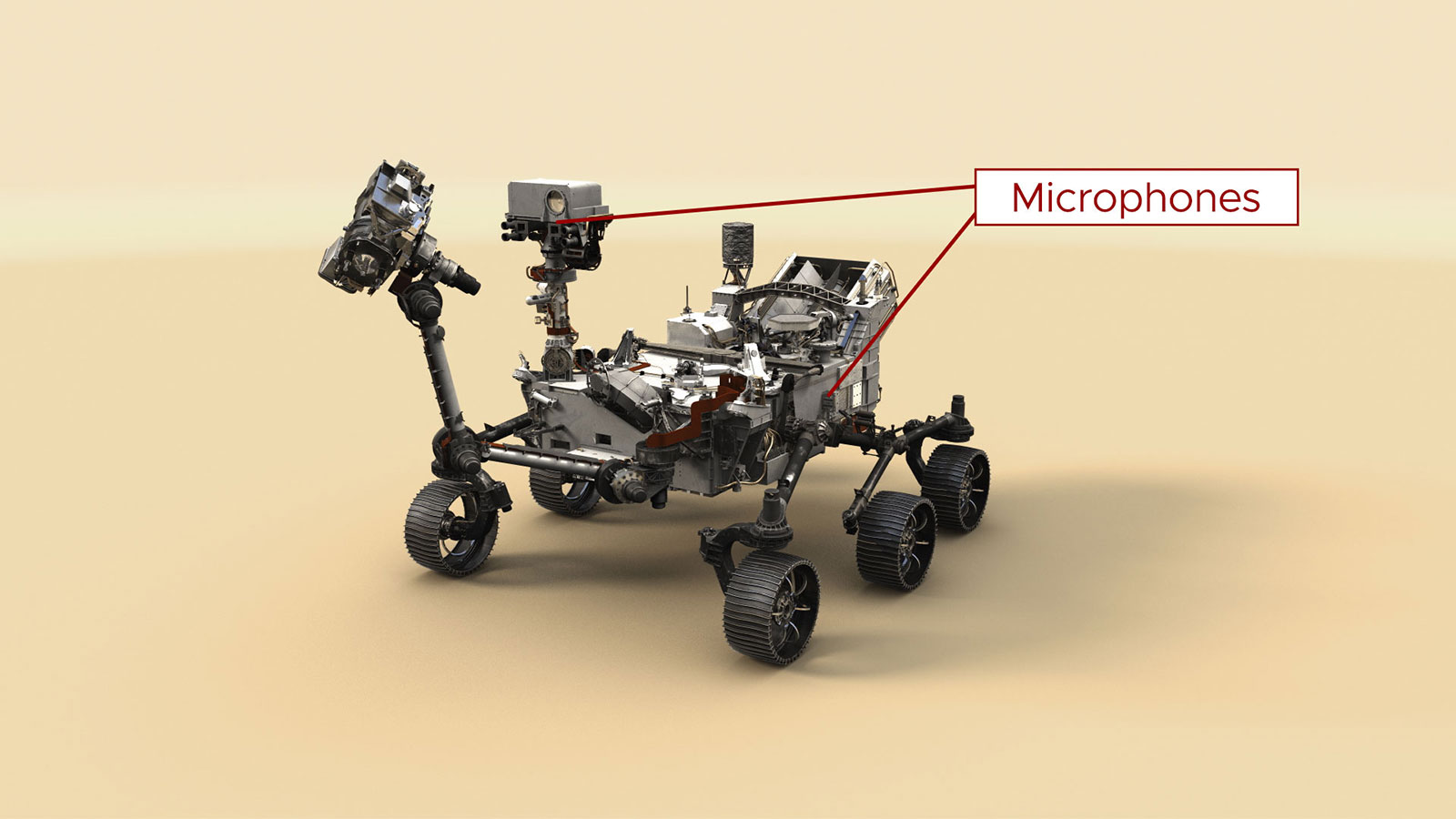According to a new study based on rover recordings, the speed of sound on Mars is slower than on Earth, and there is a deep quiet most of the time.
Listen carefully to the noises captured by NASA’s Perseverance on Mars: the rover’s mechanical whine and click in a mild Martian breeze; the spin of rotors on Ingenuity, the Mars helicopter; the crackling strike of a rock-zapping laser.
A multinational group of scientists has done just that, conducting the first audio investigation on Mars. Their new research exposes how quickly sound travels through Mars’ thin, largely carbon dioxide atmosphere, how Mars would sound to human ears, and how scientists can use audio recordings to examine minute air-pressure changes in another world — as well as the rover’s health.
“It’s a new sense of investigation we’ve never used before on Mars,” said Sylvestre Maurice, an astrophysicist at the University of Toulouse in France and the lead author of the study. “I expect many discoveries to come, using the atmosphere as a source of sound and the medium of propagation.”
The majority of the sounds in the study, which was published in the journal Nature on April 1, were captured using the microphone on Perseverance’s SuperCam, which is positioned atop the rover’s masthead. The paper also mentions sounds captured by a microphone positioned on the rover’s chassis. The rover’s Gaseous Dust Removal Tool, or gDRT, blows shavings off rocks that the rover has scraped in order to examine. This second microphone recently recorded the puffs and pings of the rover’s Gaseous Dust Removal Tool, or gDRT, which blows shavings off rocks that the rover has scraped in order to examine.
The recordings yielded a fresh knowledge of the peculiar properties of the Martian atmosphere, where sound travels at a slower speed than on Earth — and fluctuates with pitch (or frequency). On Earth, sound travels at an average speed of 767 miles per hour (343 meters per second). Low-pitched noises travel at 537 miles per hour (240 meters per second) on Mars, whereas higher-pitched sounds travel at 559 miles per hour (250 meters per second).
The thin, chilly carbon dioxide atmosphere on Mars is responsible for the planet’s fluctuating sound velocity. Scientists predicted that Mars’ atmosphere would affect sound speed prior to the trip, but the phenomena had never been observed until these recordings. Another impact of the thin atmosphere is that sounds travel only a short distance, and higher-pitched tones travel even less. On Earth, sound may fade after 213 feet (65 meters); on Mars, it fades after only 26 feet (8 meters), with high-pitched sounds being lost at that distance.
The recordings from SuperCam’s microphone also reveal previously unobserved pressure variations produced by turbulence in the Martian atmosphere as its energy changes at tiny scales. Martian wind gusts at very short timescales also were measured for the first time.
Hear What Familiar Earth Sounds Would Be Like on Mars
One of the most striking features of the sound recordings, Maurice said, is the silence that seems to prevail on Mars. “At some point, we thought the microphone was broken, it was so quiet,” he added.
That, too, is a consequence of Mars having such a thin atmosphere.
“Mars is very quiet because of low atmospheric pressure,” said Baptiste Chide of Los Alamos National Laboratory in New Mexico, also a co-author of the study. “But the pressure changes with the seasons on Mars.”
That means, in the Martian autumn months to come, Mars might get noisier – and provide even more insights into its otherworldly air and weather.
“We are entering a high-pressure season,” Chide said. “Maybe the acoustic environment on Mars will be less quiet than it was when we landed.”
Sounds of the Mission
The acoustic team also looked at what the SuperCam microphone picked up from the Ingenuity, the rover’s traveling companion and aerial scout, spinning double rotors. The rotors emit a “distinctive, low-pitched sound at 84 hertz,” according to Maurice, referring to the conventional acoustic measure of vibrations per second and the rotation rate for both rotors.
When SuperCam’s laser, which vaporizes fragments of rock from afar to investigate their composition, hits a target, it produces sparks that produce a high-pitched noise above 2 kilohertz.
Sound recordings from the rover’s microphones not only disclose facts about the Martian atmosphere but also aid scientists and engineers in assessing the health and operation of the rover’s numerous systems, much like a disturbing noise may be noticed while driving a car.
Meanwhile, the study’s most important tool, SuperCam’s microphone, continues to perform admirably.
“The microphone is now used several times a day and performs extremely well; its overall performance is better than what we had modeled and even tested in a Mars-like environment on Earth,”
says David Mimoun, professor at Institut Supérieur de l’Aéronautique et de l’Espace (ISAE-SUPAERO) and lead of the team that developed the microphone experiment
“We could even record the humming of the Mars helicopter at long distance.”
More About the Mission
Astrobiology, especially the search for traces of ancient microbial life, is a significant goal for Perseverance’s mission to Mars. The rover will study the planet’s geology and climate history, lay the route for human exploration of Mars, and be the first mission to gather and cache Martian rock and regolith (broken rock and dust).
Following NASA missions, in collaboration with the European Space Agency (ESA), spacecraft would be sent to Mars to collect these sealed samples from the surface and return them to Earth for further investigation.
The Mars 2020 Perseverance mission is part of NASA’s Moon to Mars exploration strategy, which includes Artemis lunar missions to help prepare for human exploration of Mars.
For more about Perseverance:
and

